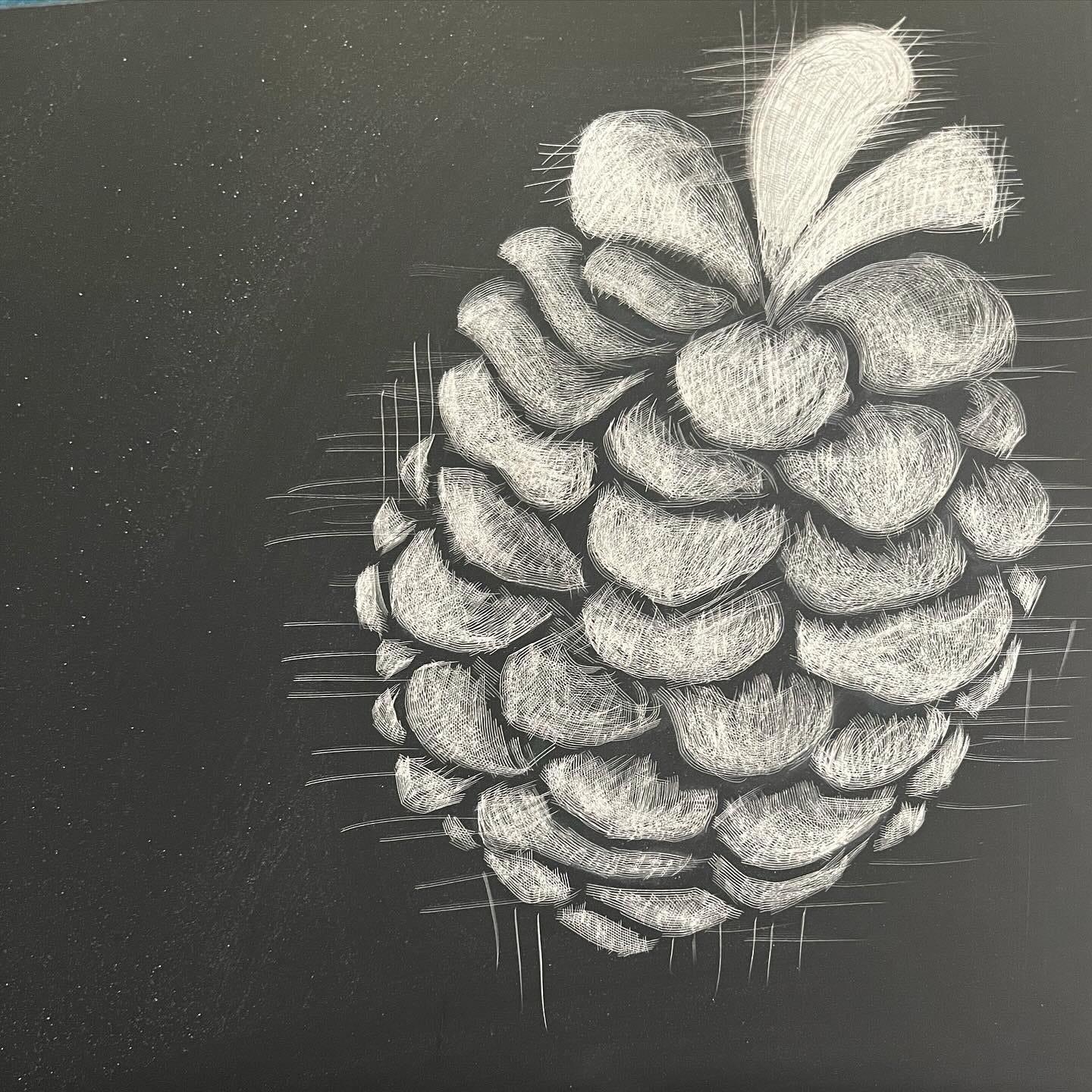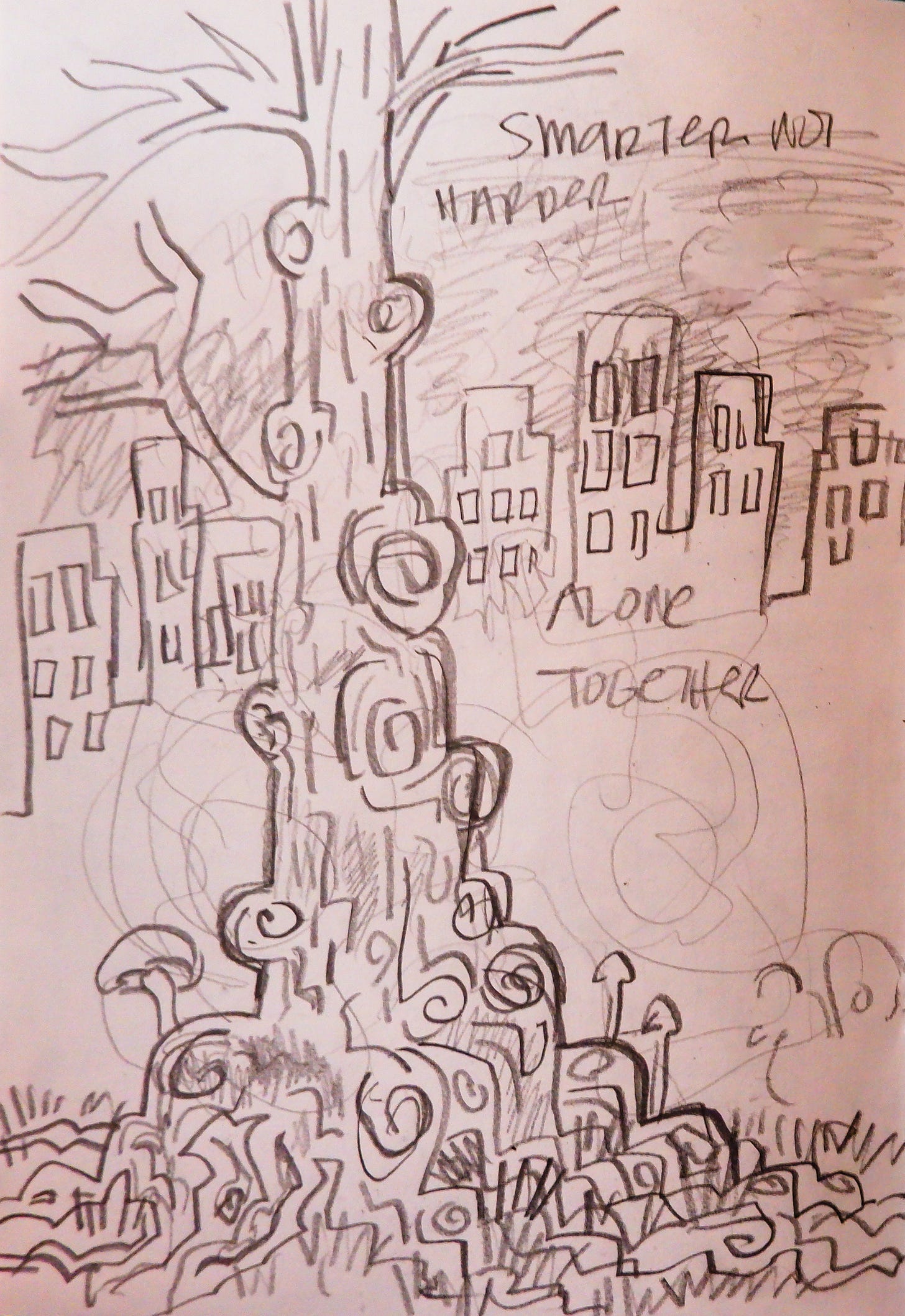Today is St. Patrick’s Day, named for the 5th-century Catholic saint (c. 385-461 CE) who is often credited with bringing Christianity to Ireland, largely subsuming indigenous spirituality in the process. As a person of Irish descent with pagan sensibilities and a strict religious upbringing, celebrating this seems dubious at best.
If there’s a real hero[x] of Irish spirituality, it’s a femme-leaning figure with psychedelic, pagan connections: St. Brigid. She represents the rewilding many of us are longing for, a revisiting of what to engage with and when to opt out.
Patty vs. The Bride
While Brigid of Kildare (c. 451-525 CE) was a historical person, her mythology predates her by millennia. The goddess Brigid was the primary deity of the Druids, a "triple goddess" representing all stages of life: maiden, mother, and crone. She presided over art, brewing, smithing, poetry, music, and health. Her name means "bride," associated with the bear (which hibernates as "bride of the Earth") and the cow in pagan traditions.
Though once recognized as a saint, Brigid was stripped of this title in 1969 without clear explanation. Nevertheless, she remains acknowledged by the Irish people as perhaps the most important spiritual figure alongside Patrick. Her feast day, 1 February, coincides with Imbolc, one of the four major seasonal festivals in pre-Christian Irish tradition marking the beginning of spring.
Patrick is famous for allegedly "driving the snakes out of Ireland," though the island never had snakes to begin with. While it's uncertain whether this metaphor represented Patrick eradicating the Druids (Irish pagan scholar Lora O’Brien notes the evidence is limited to a single source), snakes do appear frequently in esoteric and shamanic traditions, especially related to medicine. They're associated with folk healers who utilized local botanical knowledge, but were persecuted as witches when they couldn't be assimilated into church doctrine—largely because they offered direct spiritual experiences through visionary plants, trees, and fungi that revealed the divine to anyone who worked with them, opening channels for self-healing in the process.
Practicing this kind of direct connection with higher forces, nature, and myself has changed my life, empowering me by removing the intermediary. As researchers including Ash Ritter, Gabriela Gutierrez, and Brian Muraresku have also questioned: If you can talk directly to God, what purpose does the church serve? If you can heal yourself, why do you need a doctor?
Cycles and circles
I woke even earlier than usual today and sat at my altar, which is adorned with Irish images: the Cailleach, or crone; the wren, raven, and owl, sacred birds; and the deer shaman, all figures that are said to pass easily between the realms of the living and dead. I have struggled with holding the tension of living in this liminal space, wondering if I should spend more time in this world. Yet the more I learn, the more it seems this is part of the method. In Irish cosmology, the realm of spirit is called the Otherworld; it isn’t some far-off place, restricted to those not in bodies; it’s not a hellish underground nor unattainable heavenly domain. It’s present, adjacent to our own world; a place where no one gets old or goes hungry, but otherwise, not all that different, and humans and deities can freely move between the realms.
Learning this, I felt so seen! Maybe instead of approaching these forms of existence as a tension, I can embrace the in-betweenness and even overemphasis on the astral as tradition, part of the pagan vocation.
In the lands now called Ireland, Scotland, England, and Wales, pagan cosmologies revolve around connection with the seasons, including “The Wheel of the Year,” where time is divided based on the movements of heavenly bodies around the earth like equinoxes and solstices, observed in communal rituals that draw people from across wide geographies. Forms of naturalist devotion, they honor the spirits of the land, sea, and air, representing a connection many are longing for in corporate consumer cultures divorced from seasonality, demanding we do the same thing every day to maximize yearly productivity.
All over the world, early forms of spirituality were centered on regenerative cycles, womb-bearing figures, and mystical direct experience through nature, with balance as the most important principle. When the Roman empire included Christianity as part of its aggressive expansion, local traditions were forced underground. Contrary to popular belief, pagan and shamanic practices did not disappear; while many have forgotten, we’re remembering now.
Historically, the word pagan has been used as a pejorative to mean “black magic”—but it just means “non-Christian.” It’s a similar term to “shamanism” (which for some has problematic connotations due to Indigenous origins in Siberia and elsewhere). Siberian shamanism itself revolves around one of humanity’s oldest sacraments: Amanita muscaria, the oft-misunderstood red speckled mushroom associated with both Santa Claus and witches. Amanita has become one of my most trusted allies (more on this in future posts), and Brigid’s mythology is steeped in her symbolism. For example, she was said to have been born in the house of a wizard who would only let her drink the milk of a cow with red and white ears. (The mushroom, traditionally, is decocted in milk to reduce unpleasant physical side effects.)
Other symbols include the perpetual sacred flame, tended by her nuns at Kildare until the 16th century, and the Brigid’s cross that is woven from rushes, representing fertility. She was said to perform miracles of abundance, transformation, and healing, multiplying food for the hungry, curing the sick—and turning water into beer. I loved Brigid for this reason when I was a beer writer, but she has come to mean so much more to me. She’s also a trans-figure, guardian of spaces like wells and doorways.
Choose your dissociation
St. Patrick’s Day is “celebrated” in rituals of drinking to the point of complete dissociation, causing chaos in the streets of cities and towns across the Anglosphere and Europe. Back in the day when alcohol was my substance of choice, I used to say St. Patty’s was my favorite holiday, because it stripped away all the pretense and cut straight to the booze.
It’s what you do when you’re cut off from your real history and the medicine of community. While Patty may have denounced British mistreatment of the Irish, attempting to assimilate local beliefs and practices is its own type of violence. Of course, the cultural shift was a much longer, slower process than one man could possibly be responsible for.
Similarly, the rampant abuse propagated by Catholic priests over millennia spread as slowly and insidiously. It’s a trauma deeply embedded in the bones of the Irish people; of Catholics everywhere; of my family, and healing calls for an equally complex and careful approach. They say the energy you bring to any activity is the energy you’re met with, and Western medicine involves warlike tactics, with metaphors for healing like “fight, battle, and eliminate.” Earth-based medicine, on the other hand, tends to be much gentler, involving slowing down and listening to the stories our bodies are trying to tell us; dissociating from symptoms and systems as much as we need to in order to get well.
Evidenced by tradition, innate knowledges, and academic research, Amanita muscaria may have been part of humanity’s oldest forms of medicine and devotional practice. Like that other ancient sacrament, alcohol, it’s also a dissociative. But while alcohol primarily utilizes the brain’s dopamine system, related to pleasure and reward, Amanita primarily works on GABA-A receptors; these manage the flood of information from the sensory environment into the brain that can manifest as pain or traumatic overwhelm. Alcohol affects GABA systems secondarily, but it does so by enhancing the sedating effects, while Amanita utilizes glutamate receptors that have balancing excitatory effects, contributing to a state of relaxed alertness—recognized by many meditators and cognitive researchers as the optimal conscious state.
I call it “conscious dissociation,” taking agency over the degree to which you engage with your reality. It’s also the idea behind most forms of trauma healing, where people step away from the present and intentionally revisit the past to reclaim old narratives, as the nervous system gets frozen in old patterns: unconsciously dissociating, causing you to react to current situations like you’re still five years old and helpless. Practices like Internal Family Systems, self-inquiry, and EMDR (eye movement desensitization rapidization) involve journeys into memory to change the story and update the body and brain. It’s also how I believe we can heal the trauma of disconnection from our original histories and belief systems, and the planet itself.
I’ve spent plenty of St. Patty’s Days perched on a pub stool with a pint in my hand, and there’s nothing inherently wrong with this type of ritual. They’re both pathways to dissociating, because part of being human is learning to move between the worlds of the living and dead, earth and spirit. But medicine like Brigid’s, whether ingesting a mushroom or rewilding ourselves, allows us to dissociate consciously: opting out of what doesn’t serve, yet maintaining the connection to the human body that is the conduit for every journey.
So however you choose to acknowledge the day, I propose we invite the snakes back to sit beside us on that pub stool, slithering home.
All artwork by me; to see more, check out my gallery. For prints, contact me.







